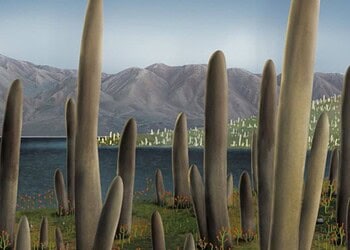Most of us have experienced the simple pleasure of shade on a hot summer day. Hot days are more than just uncomfortable, they are an important health concern. And, with climate change in full swing, heatwaves and extreme heat are becoming more common. Urban trees offer a natural cooling system, mitigating some of this heat — and according to a new study, they save lives and prevent plenty of visits to the ER.
But the same study also reveals a stark disparity: neighborhoods with fewer trees, often home to people of color and low-income residents, suffer more from heat-related health issues.

We take trees for granted, but we really shouldn’t. Especially in urban areas, where they are dearly needed, trees provide a range of environmental services. They improve air quality by absorbing pollutants and sequestering carbon dioxide, reduce stormwater runoff by intercepting rainfall, and provide crucial habitats for urban wildlife, fostering biodiversity even in densely populated areas. Additionally, trees enhance the aesthetic appeal of urban landscapes, offering psychological and physical benefits to city dwellers.
But, perhaps most importantly, trees play an important role in mitigating the urban heat island effect.
Essentially, cities are hotter than their surroundings. This phenomenon, which affects over a billion people globally, results from land modifications where dark surfaces like concrete and asphalt absorb and retain heat. Having fewer trees and other vegetation also contributes to the urban heat island effect.
Trees significantly reduce temperatures in city environments, making them more livable and comfortable by providing shade and cooling the air through transpiration. A research team led by urban ecologist Rob McDonald of The Nature Conservancy surveyed data for 5,723 urban areas where 180 million people lived (around half of the US population).
The tree bias
In all neighborhoods, trees saved lives and prevented emergency visits. But predominantly white areas have more trees and the effect is noticeable.
In white neighborhoods, trees help to prevent 632 deaths, while in minority-predominant (“people of color” or POC) neighborhoods, trees only prevent 442 deaths. The populations in the two areas were similar (91 million in white neighborhoods vs. 89 million in POC neighborhoods). The same trend was observed when looking at doctor visits. In majority white neighborhoods, trees save around 200 more lives and prevent 30,000 more doctor visits.
The researchers compared tree coverage and found that, on average, neighborhoods with a majority of non-Hispanic white residents have 11% more tree canopy cover and 14% less impervious surface compared to neighborhoods with a majority of people of color (POC). This disparity in tree cover results in significant differences in cooling benefits and associated health outcomes.
The study goes on to suggest that targeted reforestation efforts in POC neighborhoods could help address these inequalities. By increasing tree cover, especially in areas with less existing canopy, we can improve public health outcomes and enhance the resilience of vulnerable communities to the impacts of climate change. In fact, the researchers propose a targeted program to do this.
More trees to save money
The urban reforestation program would require planting 1.2 billion trees across US cities. This reforestation effort could reduce population-weighted average summer temperatures by an additional 0.38 °C, leading to significant reductions in heat-related health impacts and energy consumption.
Specifically, the program could prevent an additional 464 deaths annually, reduce heat-related morbidity by 80,785 cases, and lower electricity consumption by 4.3 TWhr per year. Moreover, it would increase carbon sequestration by 23.7 million metric tons of CO2 (equivalent) — reducing the US total greenhouse gas emissions by around 0.5%.
The total economic value of the benefits from an ambitious reforestation program, including carbon sequestration and avoided emissions, would come to $9.6 billion annually. In many neighborhoods, the program would pay for itself and in areas that currently have less tree cover, often majority POC neighborhoods, the return on investment from tree planting would be particularly high. The study suggests that even a small increase in tree coverage in key areas can make a big difference.
Policymakers would also be wise to look into such programs sooner rather than later. As climate change continues to make more of an impact, the frequency and intensity of heatwaves are bound to increase. In this context, urban tree cover can become a vital component to mitigate the health impacts of excessive heat in cities. And addressing the unequal distribution of tree cover can also be a way to reduce social inequality.
Based on the findings of this study, policymakers and city planners should prioritize equitable reforestation initiatives to ensure that all communities can benefit from the cooling and health benefits of urban trees. By doing so, cities can enhance their resilience to climate change and improve the well-being of their residents.
The study was published in npj Urban Sustainability.





